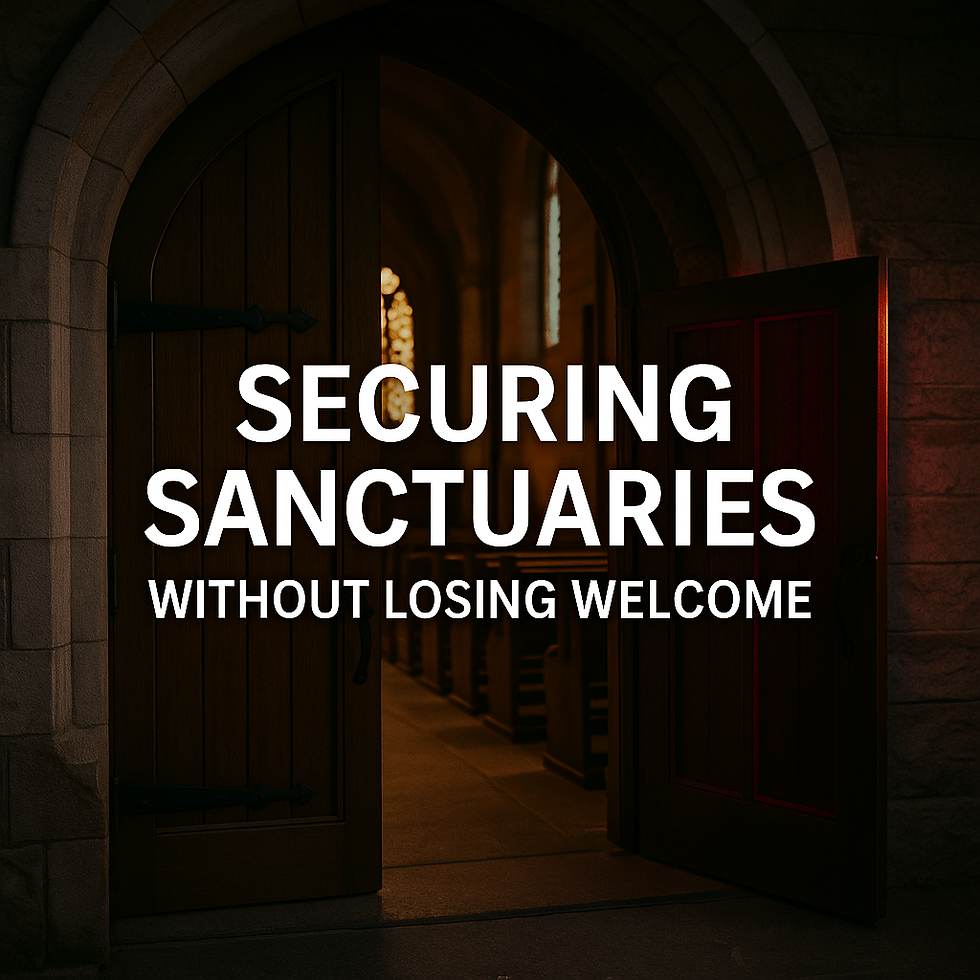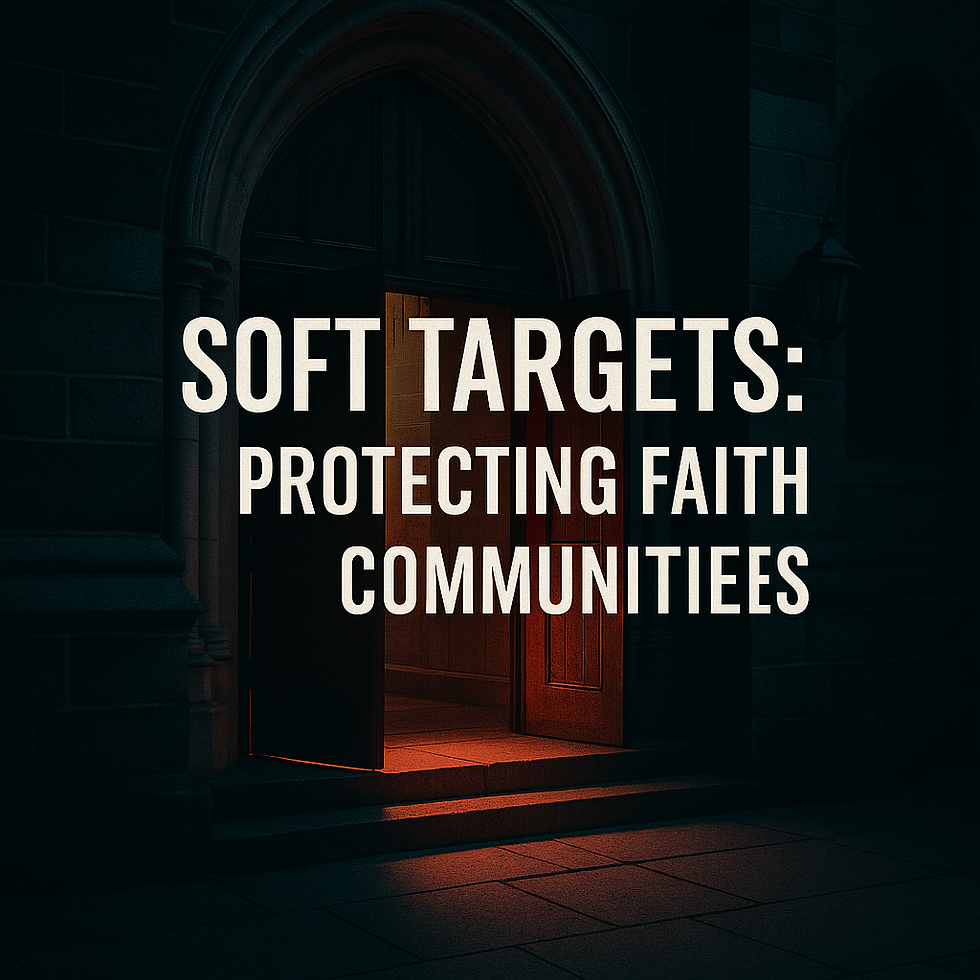Access Control & Guest Safety: How to Secure Sanctuaries Without Losing Welcome
- CrisisWire

- Sep 28
- 2 min read
Sanctuaries — whether churches, synagogues, mosques, or faith-based schools — are built on openness. Doors are unlocked, visitors are welcomed, and community is celebrated. Yet, this very openness makes them soft targets for violence, theft, and hate-driven attacks.
The challenge for leaders is balancing hospitality with security. Close the doors too tightly, and you risk alienating the faithful. Leave them too open, and you risk tragedy. The good news: with the right access control policies, you can protect your congregation without sacrificing welcome.
The Risks Leaders Don’t See
Predictable schedules: Weekly services and events create routine targets for attackers.
Multiple entrances: Many sanctuaries have side or rear doors left unsecured.
Parking lot vulnerabilities: Assaults, thefts, or suspicious loitering often start outside.
Children’s ministries: Nurseries and classrooms with limited access control are high-risk.
Digital exposure: Livestreams, social media posts, and newsletters can unintentionally expose floor layouts or leadership schedules.
Case Studies that Changed the Conversation
Charleston, South Carolina (2015) – A gunman entered a Bible study at Emanuel AME Church, killing nine. The open-door policy was exploited.
Texas Synagogue (2022) – A hostage incident began when an attacker was welcomed as a guest.
Multiple incidents in Europe show attackers targeting services that were widely publicized online.
These tragedies remind leaders that access control is not unfaithful — it is stewardship.
Solutions: Access Control Without Losing Welcome
1. Perimeter Safety
✔ Designate primary entrances.✔ Keep side/rear doors locked during services.✔ Train greeters to be safety observers, not just welcomers.
2. Visitor Management
✔ Ask all visitors to check in (sign-in, temporary badge, or escort system).✔ Greeters can welcome warmly while discreetly assessing behaviors.✔ Limit unsupervised access to sensitive areas (nurseries, offices, donation handling).
3. Layered Access Control
✔ Parking lot patrols or cameras to monitor suspicious activity.✔ Secure children’s ministry areas with locks and check-in/out policies.✔ Multi-factor locks (key + code) for offices, server rooms, and financial records.
4. Emergency Preparedness
✔ Develop a written Emergency Operations Plan (EOP).✔ Rehearse lockdown, evacuation, and medical response drills.✔ Partner with local police and DHS protective services for training.
Checklist for Leaders (Use Monday Morning)
Review all entrances and designate primary points of access.
Establish a greeter/safety observer program.
Secure children’s areas with access controls and check-in policies.
Create or update a visitor management log.
Conduct a walkthrough with local law enforcement for blind spots.

Why This Matters
Every unlocked door is an invitation. Every unchecked visitor is a risk. Leaders have both a moral and legal duty of care to protect their communities. Failing to act can expose not only lives but also the institution to liability, lawsuits, and reputational loss.
Protecting a sanctuary doesn’t mean locking people out — it means ensuring everyone who walks through the doors is safe inside.
Resources for Leaders
📚 For deeper frameworks, checklists, and policies, explore these resources:
👉 Read more insights on the CrisisWire Blog📩 Contact CrisisWire today for site-specific threat assessments and emergency planning: crisiswire@proton.me





Comments